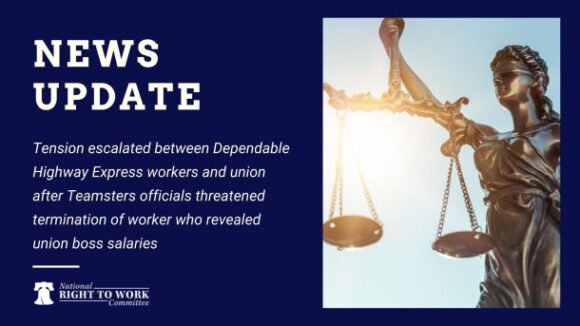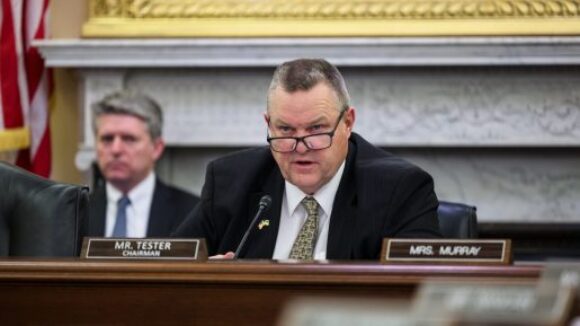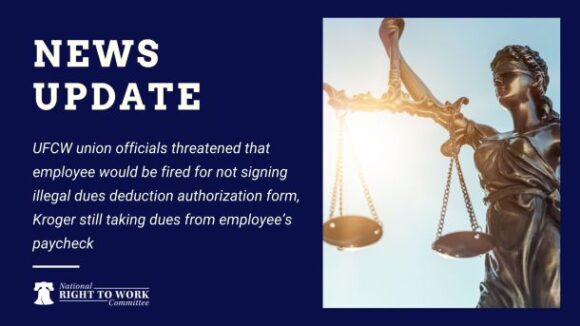It won’t be long that the union bosses will be asking for their own federal bailout if the Wall Street Journal is correct:
We spent a fortune to elect Barack Obama,” declared Andy Stern last month, and the president of the Service Employees International Union wasn’t exaggerating. The SEIU and AFL-CIO have been spending so much on politics that they’re going deeply into debt.
That news comes courtesy of federal disclosure forms that unions file each year with the Department of Labor. The Bush Administration toughened the enforcement of those disclosure rules, but under pressure from unions the Obama Labor shop is slashing funding for such enforcement. Without such disclosure, workers wouldn’t be able to see how their union chiefs are managing their mandatory dues money.
Alarm is coming even from inside the AFL-CIO — specifically, from Tom Buffenbarger, president of the International Association of Machinists and Aerospace Workers, who sits on the AFL-CIO’s finance committee. Bloomberg News reports that he is circulating a report claiming the AFL-CIO engaged in “creative accounting” to conceal financial difficulties heading into last year’s Presidential election. As recently as 2000, the union consortium of 8.5 million members had a $45 million surplus. By June of last year it had $90.6 million in liabilities, or $2.3 million more than its $88.3 million in assets. “If we are not careful, insolvency may be right around the corner,” Mr. Buffenbarger warned.
Machinist spokesman Frank Larkin says the report is a private document and declined to share it with us. But he didn’t deny the Bloomberg story, which said that Mr. Buffenbarger cites in particular the AFL-CIO’s reliance on its Union Plus credit-card program. In the mid-1990s, the AFL-CIO struck a deal with Household Bank to market the cards to union members in return for royalties. In the year ending June 30, 2008, the AFL-CIO earned $35 million from Household, about half the $74 million it collects in union dues. The deal has been a windfall for the union, but that may not last amid rising credit-card losses and flat consumer spending.
As for the SEIU, as recently as 2002 total SEIU liabilities were about $8 million. According to its 2008 disclosure form, the union owed more than $156 million, a 30% increase over the $120 million it owed in 2007. Its liabilities now equal more than 80% of its $189 million in assets. Net assets fell by nearly half last year, to $34 million, from $64 million in 2007. The debt includes an $80 million loan the SEIU took out in 2003 to purchase a new headquarters in downtown Washington, D.C. But the liabilities also stem from political spending, including at least $67 million last year on political and lobbying expenses, twice what it spent in 2007.
The SEIU added to its debt burden last year with $25 million in new bank loans, including $15 million from Amalgamated Bank of New York. Amalgamated is the nation’s only union-owned bank and its chairman is Bruce Raynor, who until recently was also general president of Unite-Here. Mr. Raynor has been fighting for control of that textile-hotel union, and he helped Mr. Stern conduct a raid on Unite-Here members before bolting to the SEIU.
By the end of 2008, the SEIU also owed Bank of America nearly $88 million, including its headquarters loan and another $10 million for unspecified purposes. This is the same BofA that the union has spent the past months attacking as the face of Wall Street excess. The SEIU has protested outside of Bank of America offices and demanded the resignation of CEO Ken Lewis. We assume no one forced the SEIU to invest in real estate or borrow from a bank to finance it.
An SEIU spokeswoman says the union works on a four-year cycle, in which it goes “all out for the presidential election” and then rebuilds its finances. She adds the union has paid back more than $10 million of the $25 million it borrowed last year. But it’s nonetheless true that the SEIU’s liabilities have continued to climb each year from 2003 to 2008.
One irony here is that the SEIU’s Mr. Stern, the most powerful labor leader in America, loudly broke from the AFL-CIO in 2005 because he said it spent too much in Washington and not enough on organizing. But unions can’t resist the lure of the Beltway precisely because they fare so poorly in the private marketplace. The union red ink helps explain why Mr. Stern and AFL-CIO chief John Sweeney are lobbying so hard for Congress to rig the rules to make it easier for unions to gather more dues-paying members.
The other lesson concerns union governance and transparency. Unions have a long history of corruption in part because they mix large amounts of cash from dues with political purposes and little oversight. Yet the same union leaders who denounce failures of corporate governance bitterly resisted the Bush Administration’s expanded disclosure, and now they want the Obama Administration to water down those rules. The news about rising union debt shows why that transparency is more necessary than ever.


